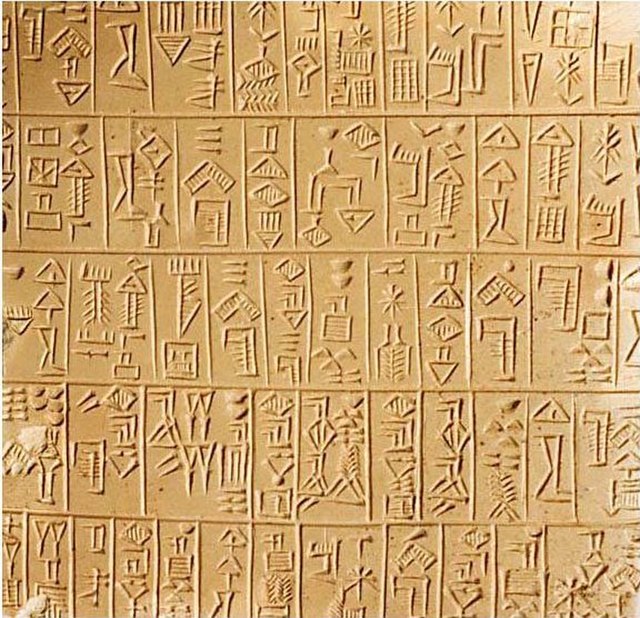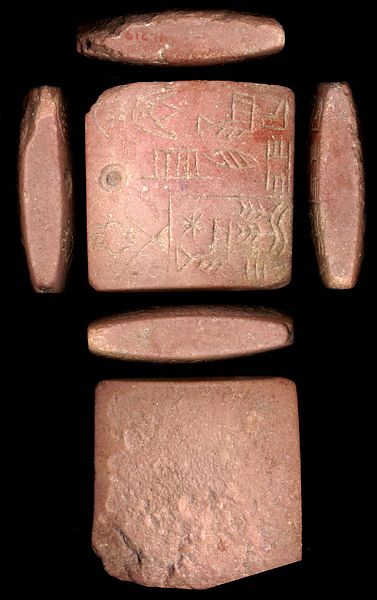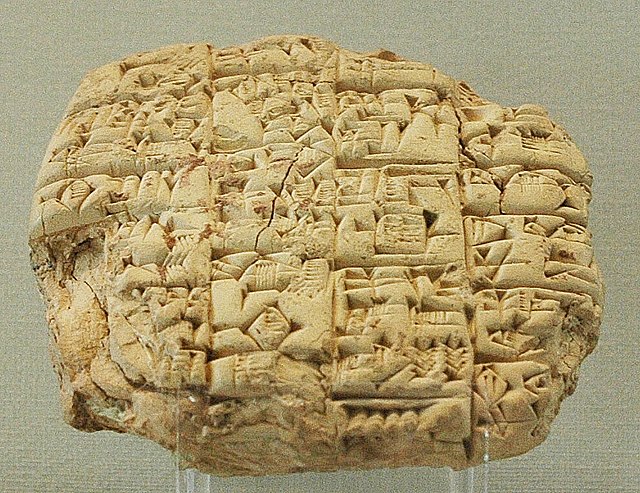Mesilim, also spelled Mesalim, was lugal (king) of the Sumerian city-state of Kish.
Head of a votive mace with a lion-headed eagle (emblem of god Ningirsu) and six lions, dedicated at a shrine in Girsu by King Mesilim of Kish. Inscription in archaic script: “Mesilim, king of Kish, builder of the temple of Ningirsu, brought [this mace head] for Ningirsu, Lugalshaengur [being] prince of Lagash”. Louvre Museum.
Image: Mace head of Mesilim Louvre AO2349
Mesilim macehead at time of discovery
Mesilim macehead with inscription Mesilim Lugal Kish (𒈨𒁲 𒈗 𒆧), "Mesilim, King of Kish".
Sumerian is the language of ancient Sumer. It is one of the oldest attested languages, dating back to at least 2900 BC. It is accepted to be a local language isolate and to have been spoken in ancient Mesopotamia, in the area that is modern-day Iraq.
Sumerian language
This proto-literate tablet (c. 3100 – 2900 BC) records the transfer of a piece of land (Walters Art Museum, Baltimore)
The first known Sumerian-Akkadian bilingual tablet dates from the reign of Rimush. Louvre Museum AO 5477. The top half is in Sumerian, the bottom half is its translation in Akkadian.
Letter sent by the high-priest Lu'enna to the king of Lagash (maybe Urukagina), informing him of his son's death in combat, c. 2400 BC, found in Telloh (ancient Girsu)








